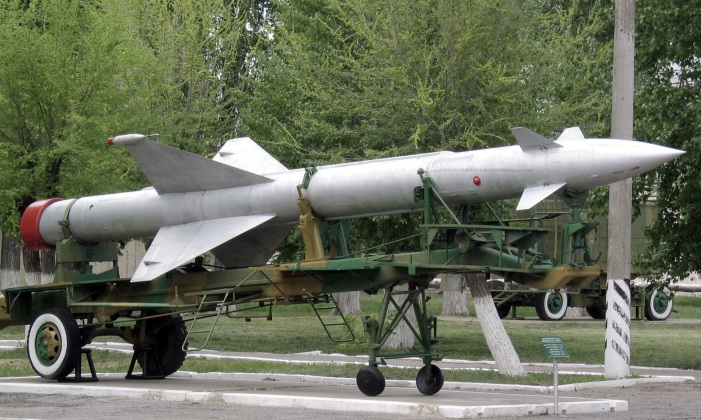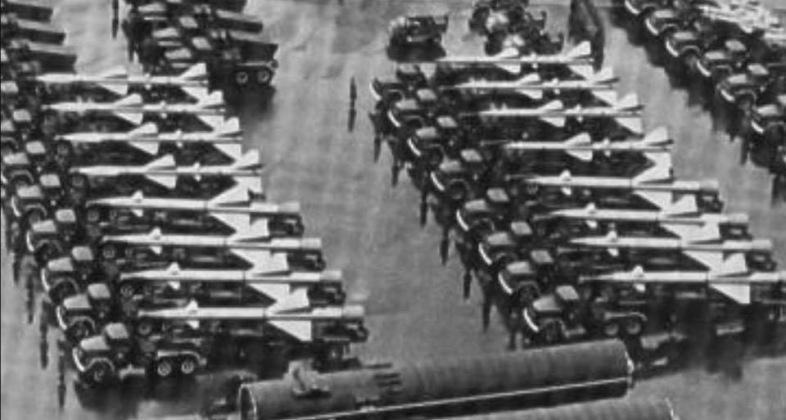The Soviet Union’s first surface to air missile system the S-25 was much less well known than the other major system of its era the S-75, but was considered a higher end design which defended the country’s seat of power in Moscow. The system was notably heavier than the S-75 and made use of a much more sophisticated suite of sensors which was well ahead of its time, but because it was never widely exported as the cheaper S-75 was it never saw combat. The air defence system was developed largely with the experience of the Second World War and Korean War in mind, which had seen Western powers effectively erase entire cities within hours in large scale firebombing raids using napalm and other incendiaries that at times could kill over 100,000 residents in a single night. 67 cities in Japan had been destroyed in such attacks, with the firebombing of Tokyo killing over 100,000 residents in a single night, before a further two cities were destroyed in nuclear strikes. The induction of nuclear weapons into the U.S. arsenal, and Washington’s demonstration of its willingness to use them even when Japan was already offering surrender, only worsened the perceived threat and was cause for much apprehension in the Soviet leadership. One result was the development of the S-25 long range surface to air missile system to defend Moscow specifically, with development beginning under Joseph Stalin’s leadership and the defence system entering service two years after his death in 1955.

Even compared to other early air defence systems the S-25 was far from mobile. Built into concentric rings between 30km and around 200-250km from Moscow, comprised of A-100 radars near the city, B-200 targeting radars deployed in two rings surrounding these, and V-300 surface to air missiles deployed around these in the outermost ring. A further ring of A-100 radars were deployed further out and were responsible for early warning and target detection. The air defence system was built to be complemented by aircraft including airborne early warning ‘flying radar’ platforms and interceptors such as the MiG-19 which also entered service in 1955. Testing of the system began in November 1952, with Soviet Il-28 and Tu-4 aircraft flown unmanned for some tests to demonstrate the air defence system’s effectiveness against them. The V-300 missiles themselves had relatively short ranges of around 30km, but because they were deployed around the city in large numbers they covered all effective approaches.

The S-25 system would receive updates over its 27 year service which allowed it to remain viable until its retirement in 1982. The system is also reported to have been sold to North Korea to defend the capital Pyongyang after the Korean War, and these are thought to have served for longer into the late 1980s. The S-25 was in many ways ahead of its time, and notably made use of multichannel guidance systems unique for its era which Western air defence platforms would only begin to field with the introduction of the MIM-104 Patriot in 1984. This facilitated the guidance of missiles to different targets using multiple radar beams simultaneously. The S-25 saw a much shorter service life than other Soviet and Russian air defence systems due to its highly specialised role, with the S-75 which entered service just two years later from 1957 still widely in use today and having been heavily upgraded over time. The Russian S-300 system which replaced the S-25 defending Moscow, meanwhile, has been in production for almost 45 years and will likely see over 90 years in service. Despite initial variants joining the Soviet military as early as 1978, the enhanced S-300V4 was still considered Russia’s most capable fully active long range surface to air missile system into the 2020s. The S-25 lacked the longevity of other designs, and when finally phased out of service in 1982 it was replaced by the S-300PS variant. Its role has since been taken over by the S-400, S-500 and A-135 systems defending Moscow. With the A-135 set to be replaced by the A-235 system later in the decade, the defence of the Russian capital will transition fully to mobile air defence systems rather fixed sites.
